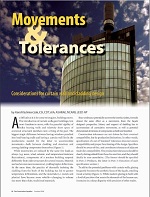Visual Air Barrier Testing
Air flow through building enclosures is supposed to be controlled. It typically follows that all exterior assemblies such as walls, roofs, and transitions need to be practically airtight, with exception of dedicated air vents. Lack of air tightness often may indicate other deficiencies: water leaks, water vapor convection, transmission of odors, insects, insufficient noise resistance, […]

 Condensation Risk Assessment
Condensation Risk Assessment Facade Access
Facade Access Facade Engineering. How To Design a Functional Building Enclosure
Facade Engineering. How To Design a Functional Building Enclosure Facade Impact Resistance Manual
Facade Impact Resistance Manual Foggy Glass Disease
Foggy Glass Disease How To Write and Read a Forensic Report
How To Write and Read a Forensic Report Movements and Tolerances
Movements and Tolerances Review of Curtain Walls, Focusing on Design Problems and Solutions
Review of Curtain Walls, Focusing on Design Problems and Solutions Transitions: How to Design Facade Interfaces
Transitions: How to Design Facade Interfaces When You Need A Window – Solar Design
When You Need A Window – Solar Design